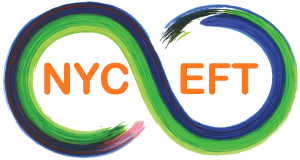NEW YORK CENTER FOR EMOTIONALLY FOCUSED THERAPY
Learning Objectives
1. Describe the nature of emotional distress from an attachment perspective
2. Explain basic attachment theory and how it informs the EFT model
3. Distinguish the systemic and experiential elements of EFT
4. Identify change factors involved in a couple moving from distress to recovery
5. Classify the nine steps and three stages of EFT
6. Identify the emotional responses that maintain the relational distress in each partner
7. Formulate the negative cycle emphasizing attachment needs
8. Differentiate necessary assessment skills in EFT
9. Practice the basic empathy skills and EFT interventions that are central to the therapeutic process in EFT, including RISSSC
10. Describe and show how to create a therapeutic alliance using empathic
attunement, validation, acceptance, and authenticity
11. Practice the basic EFT interventions for working with emotion
12. Explain and show how to facilitate new experience between partners by use of enactments
13. Apply the EFT Tango to track and reframe reactive emotion
14. Define and describe the three change events in EFT (de-escalation, withdrawer re-engagement, and pursuer softening)
15. Demonstrate the skills of accessing, exploring and deepening
emotion and facilitating acceptance
16. Discuss the steps for withdrawer re-engagement
17. Detect and transform therapeutic impasses
18. Demonstrate an ability to shape key bonding events that redefine the
relationship as secure
19. Discuss the steps for pursuer softening
20. Identify partner blocks and demonstrate successful enactments that show attuned partner response
21. Formulate attachment injuries from an attachment theory perspective
22. Cite the steps toward resolving attachment injuries, creating forgiveness
23. Formulate affairs from the perspective of attachment theory
24. Express an understanding of the repair of attachment injuries, fostering healing within and between each partner
25. Summarize the application of EFT to individuals (EFIT) and families (EFFT)
26. Integrate the positive cycle of interaction
27. Review next steps for continued study and professional development as an
EFT therapist
28. Summarize an EFT approach to managing comorbidities such as depression and sexual dysfunction
